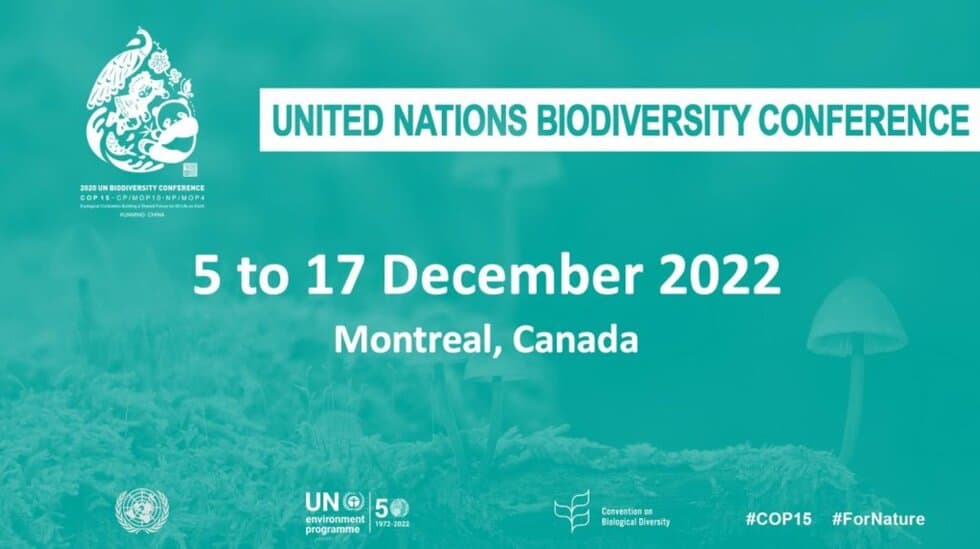Opinion: Why Aotearoa New Zealand should be paying careful attention to biodiversity and to the outcome of the UN Biodiversity Conference (COP 15)
by Don Morrisey and Dr Robin Holmes | 14/12/22
As many in Aotearoa New Zealand are winding down for the summer holidays and preparing to celebrate Christmas, an important event is taking place in Montreal, Canada. Governments from around the world are meeting for the United Nations Biodiversity Conference (COP 15), which aims to adopt a global framework to address drivers of biodiversity loss. While it is tempting to switch-off at the end of a busy year, it’s important that we pay attention, because much like the recent COP27 conference on climate change, it is essential that COP15 produces meaningful results given the urgency of the challenges we are facing. Below, Cawthron scientists Dr Don Morrisey and Dr Rob Holmes explain the state of biodiversity in Aotearoa New Zealand’s marine and freshwater ecosystems and discuss the outcomes they hope to see from COP 15.

Image: Cawthron Institute. Cawthron early career researcher Dr Bailey Lovett at Lake Waikaremoana.
Dr Don Morrisey, Senior Coastal Scientist, Cawthron Institute.
Describing biodiversity in the marine environment is more challenging than assessing it on land, or even in fresh water. In all environments, most types of plants and animals are small, cryptic and often less-than-charismatic, but in the sea they are also hidden by water. Consequently, assessing the status of marine biodiversity is difficult.
For example, the Department of Conservation classifies 11 species of marine invertebrates as ‘Threatened’ and a further 324 as ‘At Risk’ (declining, recovering or naturally uncommon), which sounds even worse when you consider that the 415 species included in this assessment represent only 5% of Aotearoa’s known marine invertebrates. In the case of seaweeds, of 938 species considered, seven were classified as ’Threatened’, 120 as ‘At Risk’ but for more than 600 species there was insufficient information to assess their abundance and distribution. Even in the case of the relatively well-known marine mammals, 30 of the 57 species that occur in the waters of Aotearoa could not be assigned a status because of lack of information.Habitat protection is, therefore, particularly critical for preserving and restoring marine biodiversity. If the habitat is protected, so are its species, known and unknown. Protected habitats include areas of particularly high biodiversity and productivity, such as rocky reefs and kelp forests, shellfish and seagrass beds, and other places where animals and plants create their own diverse habitat (‘biogenic’ habitats). Many of these habitats are biologically diverse not just on their own but because they act as nursery areas for species that live elsewhere as adults, including many fish species. Habitats that are widespread and not at risk of disappearing are also of great importance because of the role they play in nutrient recycling, primary (plant) and secondary (animal) production, and in exporting these to other habitats and levels of the food web. These widespread habitats include the large areas of mud and sand that make up much of the coastal seabed of Aotearoa New Zealand.
The Global Biodiversity Framework that COP 15 aims to adopt contains a pathway to managing these threats. It includes targets for integrating management of changes to use of the land and sea in ways that protect biodiversity, and for restoration and protection of marine areas. Implementation of these targets in Aotearoa covers familiar topics—better management to reduce nutrient discharges to the coast from livestock, fertilisers and wastewater, control of soil erosion, and improved management of fisheries. These efforts are also critically important in light of the looming threat of climate change, which will only increase erosion and run-off, raise sea temperatures and cause ocean acidification. From an objective viewpoint, it’s difficult to understand why we wouldn’t want to do any of these things but, in the face of short-term gain for the few, long-term benefit for the many requires stronger regulation and enforcement by local and central government.
Dr Robin Holmes, Team Leader River and Lake Ecology, Cawthron Institute.
Aotearoa New Zealand is blessed with an abundance of rainfall and expansive tracts of native forest and tussock lands. Much of our watershed headwaters are protected by a conservation estate which covers around a third of the county. Yet, in common with the rest of the word, our freshwater biodiversity is under threat from multiple interacting stressors.
NZ has over 675 species of freshwater invertebrates and despite deficient data many are considered to have declining or threatened populations. There are about 50 species of native freshwater fish (and still counting), with 92% of these found only in New Zealand. Over 70% of these fish species are at risk or threatened with extinction – an alarming percentage by global standards.
A feature of our freshwater fish fauna is a high degree of diadromy, around a third of species spend part of their lives at sea. This means our fish populations are especially vulnerable to habitat fragmentation from hydro-power dams and smaller scale passage barriers such as weirs and culverts. However, our most significant freshwater biodiversity challenge is addressing ongoing and legacy effects of intensifying land use around our lowland freshwater habitats. Historically these habitats harboured the majority of our freshwater biota. Over 90% of NZ’s wetlands have been lost and abstraction affects most lowland waterways. Compounding on these habitat reductions are increased fine-sediment and nutrient loads (primarily) from agriculture. Reduced habitat area and increased agricultural pollutants are now interacting with warming waterbodies and changing river flow dynamics under climate change, meaning the future of our freshwater biodiversity is uncertain.
Despite these challenges, only one native freshwater fish is recorded as extinct so far (the NZ grayling), so much of our biological heritage is redeemable. Improving freshwater health is now high within the public consciousness and this has resulted in recent sweeping freshwater policy reforms that are curbing the excesses of land use intensification and improving fish passage. Any global agreement on protecting biodiversity needs to consider ways to address the ecological degradation caused by agriculture. Ecologists have been working on the challenges of native biodiversity loss for near a century now; indigenous practitioners even longer. The knowledge needed to ‘bend the curve’ of species loss is ready to be used. It is important that global agreements acknowledge and empower local solutions based on local knowledge to restore local freshwater ecosystems. With sufficient resourcing collectively these solutions will scale to create positive global impacts.

